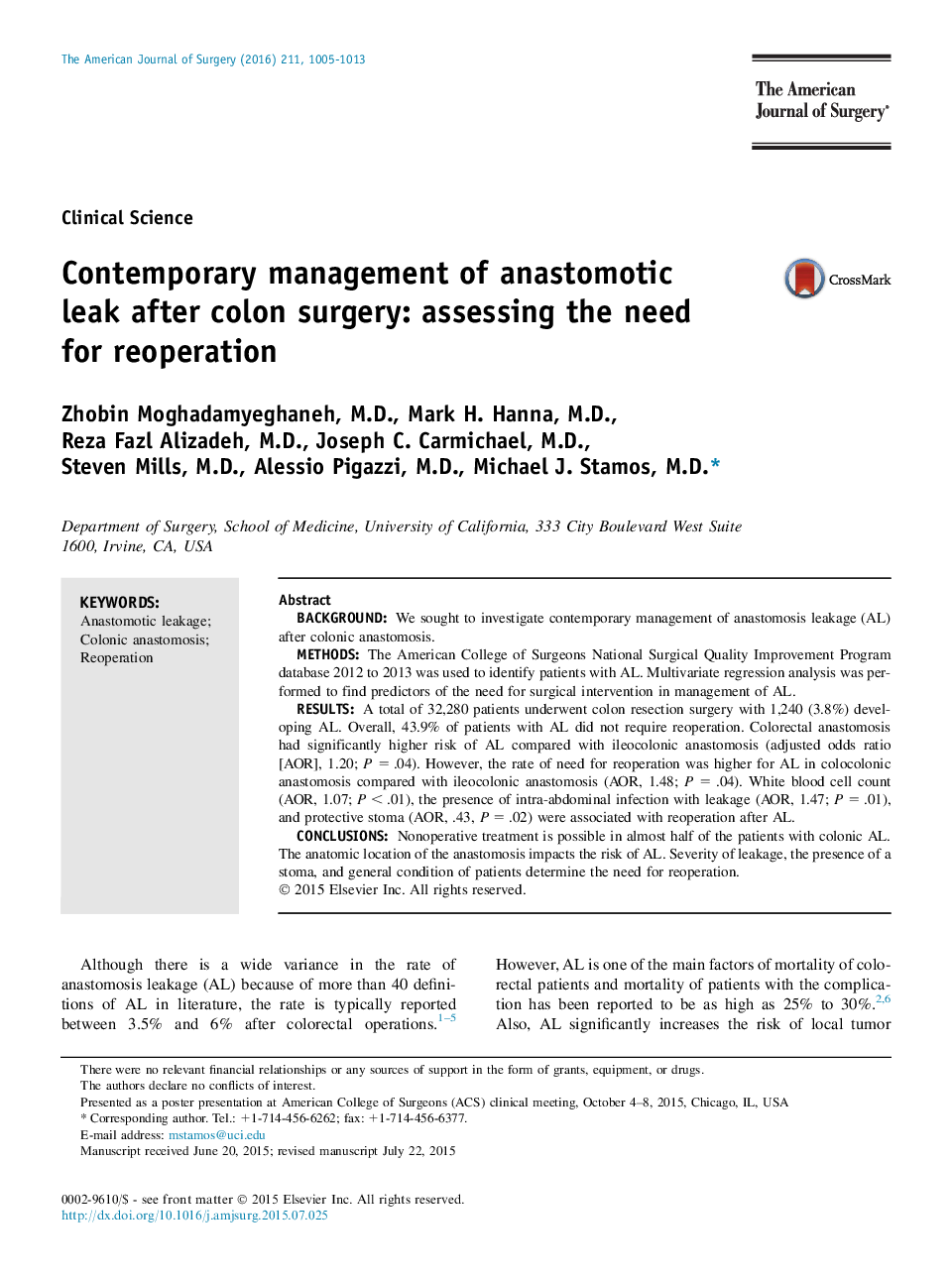| کد مقاله | کد نشریه | سال انتشار | مقاله انگلیسی | نسخه تمام متن |
|---|---|---|---|---|
| 4278183 | 1611482 | 2016 | 9 صفحه PDF | دانلود رایگان |
• Overall, 43.9% of patients with anastomosis leakage after colonic anastomosis do not require reoperation.
• The anatomic location of the anastomosis impacts the risk of anastomosis leakage.
• Severity of leakage, absence of a stoma, and general condition of patients are factors determining the need for reoperation.
• Patients older than 70 with comorbidity of obesity or chronic steroid use may benefit from protective stoma.
BackgroundWe sought to investigate contemporary management of anastomosis leakage (AL) after colonic anastomosis.MethodsThe American College of Surgeons National Surgical Quality Improvement Program database 2012 to 2013 was used to identify patients with AL. Multivariate regression analysis was performed to find predictors of the need for surgical intervention in management of AL.ResultsA total of 32,280 patients underwent colon resection surgery with 1,240 (3.8%) developing AL. Overall, 43.9% of patients with AL did not require reoperation. Colorectal anastomosis had significantly higher risk of AL compared with ileocolonic anastomosis (adjusted odds ratio [AOR], 1.20; P = .04). However, the rate of need for reoperation was higher for AL in colocolonic anastomosis compared with ileocolonic anastomosis (AOR, 1.48; P = .04). White blood cell count (AOR, 1.07; P < .01), the presence of intra-abdominal infection with leakage (AOR, 1.47; P = .01), and protective stoma (AOR, .43, P = .02) were associated with reoperation after AL.ConclusionsNonoperative treatment is possible in almost half of the patients with colonic AL. The anatomic location of the anastomosis impacts the risk of AL. Severity of leakage, the presence of a stoma, and general condition of patients determine the need for reoperation.
Journal: The American Journal of Surgery - Volume 211, Issue 6, June 2016, Pages 1005–1013
